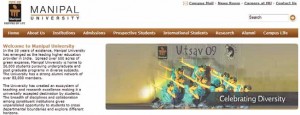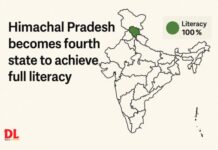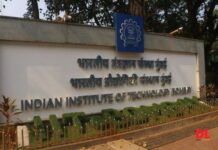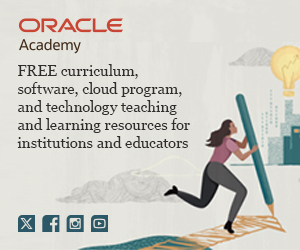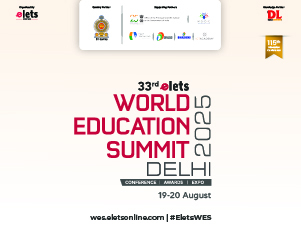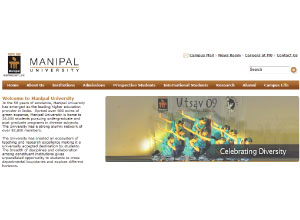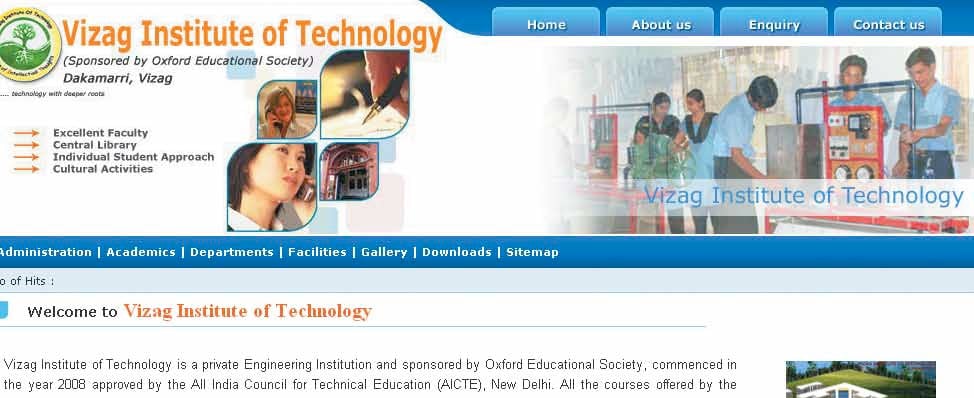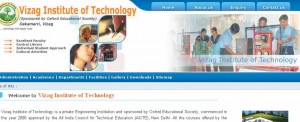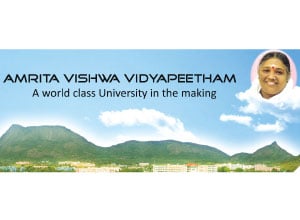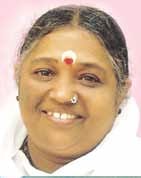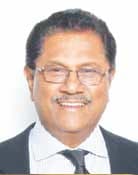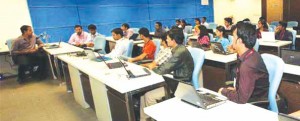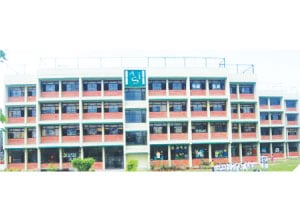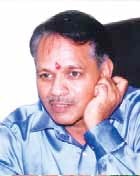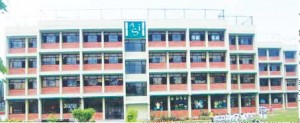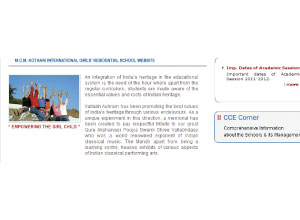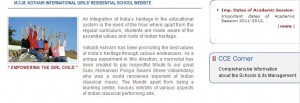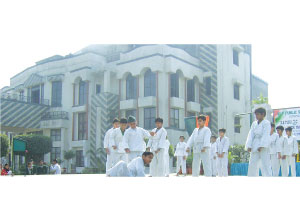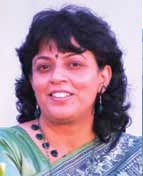 In order to present a comprehensive picture of the way digital education is progressing in India, we have collected the views of some of the leading stakeholders in education. Just a quick glance at the concise inputs that we have gleaned from the noted players in the industry will be enough to place the spotlight on the most crucial issues that our system of education grapples with today. There is no doubt that the modern curriculum represents a noted departure from traditional approaches to education, but there are many challenges that we are yet to overcome. New technologies in education are constantly becoming available, yet there are many challenges in implementing them in schools and higher education institutes across the length and breadth of the country.
In order to present a comprehensive picture of the way digital education is progressing in India, we have collected the views of some of the leading stakeholders in education. Just a quick glance at the concise inputs that we have gleaned from the noted players in the industry will be enough to place the spotlight on the most crucial issues that our system of education grapples with today. There is no doubt that the modern curriculum represents a noted departure from traditional approaches to education, but there are many challenges that we are yet to overcome. New technologies in education are constantly becoming available, yet there are many challenges in implementing them in schools and higher education institutes across the length and breadth of the country.
The Next Step in Education
Take strong concepts, and research with academia to come up with solutions that are really designed for India
solutions that are really designed for India
It is the job of educational entrepreneurs to work with the academia and create solutions that are more accessible to consumers. When Next Education started developing content, we found that there was a paucity of research material that would actually give important information on how to develop content. For instance, if English is the second language, then what is the minimum vocabulary that someone needs to have to be considered proficient in the language? At what speed should words be delivered to ensure that the child’s retention is highest? Web searches will not yield the answers. Only the academia can provide such answers. Content providers need to work with the academia closely and identify such issues, understand them, address them, and then bring useful data back to the masses. Next Education has been doing such research by initiating close interaction with the academia in order to identify key parameters for effective designing of educational products. The objective was and still remains to ensure that the product can be used easily by students. A solution may have the best possible animation, excellent voice coverage, etc., but will be useless if it cannot deliver the right message at the right speed. Thus, research by academia partnering with content developers is very important. For example, thousands of dictionaries are available in the market, but research shows that traditional dictionaries can’t help a child to build a vocabulary. Princeton has done a lot of free research on this. In most cases, organisations just need to develop a simple user interface and build a dictionary to create a solution useful for India ,
ICT for Education
Latest tools from ICT must be used to enhance the scope of education
education
Infrastructure is most crucial element that separates developed nations from underdeveloped ones. The biggest crunch that India faces is the lack of quality infrastructure for education. 47 percent of this country is under the age of 20, these youngsters need access to quality education set up. HRD has committed substantial amount of resources for content creation. But are we ready for a revolution in the education market. Students these days are enamoured by latest gadgets and technologies. Latest tools from ICT must be used to enhance the scope of education. Students these days are enamoured B V S Prakash Director, 24×7 Green Lab by technology. They don’t only want to study about new technological products; they also want to study about it. Students don’t want to attend schools where there they don’t get access to computers and other technological products. The education establishment has taken notice. The curriculum of CBSC and some state boards has HTML coding in IX and X class. But the question that we really need to ask ourselves is. Do we even have the electricity to run the computer systems in our schools? We are talking about enabling our children with tablets in all parts of our country, but tablets will not help much as long as we are lacking in the most fundamental infrastructure, which is electricity, clean water, etc.
The Scope of Technology
Take strong concepts, take strong products and try to come up with the solutions that really matter
the solutions that really matter
The students nowadays are quite comfortable with the products of cutting edge technology – iPad, smartphones, notebooks, etc. So the question is not if children are going to accept technology, they already have. It is the community of teachers who seem distant from modern technological tools and systems. All kinds of technological systems are available in the market, but we ought to go for systems that our teachers are comfortable with. Teachers have to develop an understanding of how to use media correctly. It is possible for a teacher to disseminate the same amount of teaching in a fraction of time that they would take with printed books. In science labs, the use of computer saves a lot of money and time. The other issue is how technology can be implemented in the best possible way. There are certain informal ways to implement the same. The technology in educational space has to be incorporated with such audio-video systems that enable students to learn faster than they would through conventional printed books. It is very important to be creative while using the technology. Facebook can also be used to disseminate knowledge directly to the students. Perhaps some students will find it easier to learn from Facebook than they are from other means. There is no end to the ways by which teaching can be used for coming up with better teaching practices. The interactive whiteboards are of a great help in developing bonding between teachers and students. There is a lot of technology available, but it should not be forced on anyone ,
Public and Private Initiatives in Education
While many trends are surfacing within the IT industry, we see cloud computing gaining momentum
This past year has been good for the education sector, and saw stable and good market growth. The policies pertaining to education have also progressed, and as such we have seen much integration of technology into the system, whether it be through the implementation of accessible technology for the disabled, to on demand computing, or to the adoption of cloud curriculum. Successful integration of these technologies has allowed for better IT offerings for students across the board. Some of the current trends we are seeing in India include the deployment of MultiPoint server technologies which helps improve efficiency amongst schools. Furthermore, we are seeing increased focus on integrating technology use in classrooms. Microsoft offers sites such as www.innovativeteachers.com and www.saksham-ms.in to teachers, to help them leverage new teaching methods and training modules. This past year has seen significant developments in policy making. A turning point was the roll-out of Right to Education (RTE), which offers the chance of accessing premium schools for all students. There has been a greater push to include and leverage ICT programs and accessibility features to provide a more inclusive environment for students of all backgrounds. While many trends are surfacing within the IT industry, we see cloud computing gaining momentum. In 2012 will see a shift of IT Capex to Opex, through a shift to the cloud. This will allow universities to buy server time and storage space on demand.
Imparting Skills to India
 The best way of addressing the problem is to make education and training demand driven.
The best way of addressing the problem is to make education and training demand driven.
PPearson, the largest Education Services Company in the world, has been involved in lot of interesting projects in India. One of those projects is the skills training. We have set up a skill joint venture with very good local partners and now our work has started to gather steam. In our endeavours we are having lot of support from public organisations like the National Skill Development Council. Shortage of skills is a real competitive drag on Indian economy. This fact has been recognised by the government and by eminent members of the public. That is why government is now stepping in with support in form of funds and Khozem Merchant, President, Pearson India policies. The number of skilled people required is 220 million people. This is huge number and substantial efforts need to be made for training so many young people. The best way of addressing the problem is to make education and training demand driven. We need to understand where the demand, in form of jobs, is coming from. The industry needs to get involved- the construction industry, the services industry and so forth. At Pearson, we also recognise of providing vocational training at an earlier stage of a person’s education. Such training can have the effect of seeding the skill related talents in our workforce.
Computers for Everyone
 The e-content or animations are helpful in getting attention of the students. It is very important that the content should be very attractive and visually rich
The e-content or animations are helpful in getting attention of the students. It is very important that the content should be very attractive and visually rich
It is time for us to think differently. When it comes to computers, it is possible for us to have five times more from the same budget. The truth is that during the last 20 to 30 years there has been immense development in IT space, but the way we interact with our computers has not changed much. For instance, we had Wordstar 20 years back, now we have Microsoft Word. Lotus 123 has changed into Excel. A few things have changed, but the demands from the computers have not changed much. Computers have become extremely powerful machines. If a modern computer were to be transported 20 years back in time, it would serve as a data centre for an entire university. We do not use the power of the computers to the maximum. We use just 5 percent of the capacity and the remaining 95% capacity is surplus. It goes waste. So the basic idea is really simple. A way has to be found to utilise the spare computer capacity. If 60 people sitting in a room wants to start a company, they could go ahead with buying 60 computers. But do we really need to buy 60 computers? Every computer has unused capacity. So can I buy 5 computers? This is what NComputing does. We buy 5 computers and split the power into 50 or we buy say 10 computers and split the power into 500. Everyone has his own computer. But the cost of computing goes dramatically down. The solution suggested here is very simple and can easily be applied to schools, colleges and universities in India and around the world
Innovative Assessments Practices for Education
 Making new- age assessment tools available to all schools is a must
Making new- age assessment tools available to all schools is a must
Assessment practices are now becoming an important aspect of education. The conventional assessment systems do not give the teacher the flexible mechanism of actually assessing themselves and altering their lesson plans. The assessment system should comprise a unique technology, which allows the teacher to assess each student on a regular basis. There should also be a reporting mechanism that will give an analysis and conclusion of the learning that has taken place. It should not be restricted to providing only numeric numbers or marks. The assessment should be on a daily basis and should also be shared with the parents so that the parents know what their children have been doing in school, how much they have been taught and how much they have learnt. Mexus has come up with a unique assessment system which can be integrated inside the classroom without the help of any internet connectivity or wireless connection. It works locally in schools. When we talk about the masses, in India, majority of the population do not have an access to the electricity, internet connection, broadband and things like, iPad. So we thought of having a rather robust solution that can work even if there is no internet and there is paucity of devices. Assessments are crucial to the learning system, and the objective of educators should be to use it more effectively in order to ensure productive learning outcomes.
Meeting the Needs of Digital Age
Technology infrastructures must be in tune with new age requirements
requirements
The use of technology is linked to outcomes. So in education space, we must focus on the impact that technology is having on students. In the current scenario, even the graduates who have had their education are not job ready. The second aspect is that of adopting IT. How and where does a school start? How do they go about with it? Third aspect of the discussion is research, which we have done with around 1000 private K12 schools in India. Children are growing up in the Digital Age, but the infrastructure has still not matched up to the requirements. We used to have computer labs in the school to start with, but in a few years, computers in every classroom became essential. Now, it is important to have one PC for every student. Laptops and tablets are gaining a strong hold in education. If you look at kids today, they have different learning styles. So we talk about a Wack learning style, which is a visual auditory and kinaesthetic style of learning, which facilitates learning through diverse styles. Another important aspect is the Collaborative Approach, where the focus is moving from Teacher Centric Approach to the Collaborative Teacher Student Approach. Therefore, technology plays a crucial role in promoting education and faci tating newer, better and updated learning systems,
 Developing Digital Teaching Aids
Developing Digital Teaching Aids
The focus of Extramarks is to develop teaching aids that can be used to enhance the scope of education being offered in our classrooms
Digital learning is all about improving the quality of education. However, digital learning cannot be an external factor; it has to be adopted and imbibed in the education system seamlessly. It has to act as a facilitator that enhances the scope of the traditional modes of teaching enabling depth, clarity and ensures quality standardization at every level. The elements that form the classroomremain the same – the teachers, the students and the objective of classroom interaction. Over time what changes – is the medium and the methodology that enhances the learning process. By introducing digital technology in the classrooms, one allows the teacher to be more creative, interactive and productive. With new digital technology it becomes possible to cater to multiple intelligences in the classroom, introducing multiple ways of teaching the same concept. Hence, it engages the disinterested, less motivated student and challenges the advanced ones to High Order Thinking Skills. These elements in a traditional class are aspirational but not achieveable on a day to day basis. Digital learning thus, helps teacher to achieve her dream objectives of better personalized attention and outcomes in a classroom. Another advantage of digital learning is that it facilitates the teaching of new concepts and ideas as content can be presented in multi dimensional perspectives. Thus, creating ample opportunities to ever evolve the content and to keep technology bred child engaged in the classroom. It also allows the educationist to constantly align the curriculum to new developments in education, technology and industry – thus help keep the institutions connected with the real world and the students ready for the world after school .
Gateway to Growth
 India’s transition to a knowledge-based economy requires a new generation of skilled people
India’s transition to a knowledge-based economy requires a new generation of skilled people
India’s transition to a knowledge economy requires a new generation of educated and skilled people. The competitive edge will be determined by the people’s ability to effectively create, share, and use knowledge. India requires a knowledge economy to develop workers – knowledge workers and knowledge technologists – who are flexible, analytical and are the driving force for innovation and growth. Two greatest concerns of employers today are finding good workers and training them. The difference between the skills needed on the job and those possessed by applicants, sometimes called the skills-gap, is of real concern to human resource managers and business owners who might be looking forward to hire competent employees. While employers would prefer to hire people who are trained and ready to go to work, they are usually willing to provide the specialised, job-specific training necessary for those lacking such skills. India can learn a lot with the German model, which relies on the skills of their people. As a federal enterprise, our organisation supports the German government in achieving its objectives in the field of international cooperation for sustainable development. We are also engaged in international education work around the globe. We offer demanddriven, tailor-made and effective services for sustainable development. To ensure the participation of all stakeholders, we apply a holistic approach based on the values and principles upheld in German society.
Bringing Seamless Efficiency to Education
 Digital education is not only about hardware-software, teachers too have an important role to play
Digital education is not only about hardware-software, teachers too have an important role to play
Even when it is not being used for providing education directly, technology has a big role to play. Important stakeholders like teachers, principals, administrators, investors, content creators, and others depend on technology to bring efficiency into their operations. New digital technology makes it possible for them to access and disseminate information in seamless and easy manner. They need to remain connected 24/7 for sharing their views and their best practises with everyone in the chain. Ways have to be developed for us to manage the content that gets presented before the students through interactive boards and other digital avenues. There are quite a few challenges that schools have to face in managing their digital content. One of these challenges is infrastructure related. As far as infrastructure is concerned, there has to be an extensive overhauling of the systems. The heating and cooling systems have to be there. Many low income homes do not have access to high speed internet. Students from such families are unable to use their laptops at home for accessing online course material. Training of teachers is also an issue. Teachers have to learn about the best ways of using technology in classrooms. They must be able to handle minor software error or hardware error while they are in their classrooms. We can also have a system where maintenance facilities are avail- able 24/7, so that minimum time is lost inside the classroom due to any technical glitches
The Four Kinds of ‘I’ in Classrooms
The e-content or animations are helpful in getting attention of the students. It is very important that the content should be very attractive and visually rich
students. It is very important that the content should be very attractive and visually rich
The modern student is much more exposed to all kinds of information. He arrives in the classroom armed with knowledge acquired through internet, blogs, social networks, mobiles, TV, etc. Our teachers need to come up with ideas for catering to the needs of such smart students. We need to conduct an evaluation of the assessment techniques that we have in place today. Students prefer to be involved in the teaching process. The system of a teacher lecturing to a group of students is not conducive for the modern age. If we involve the students in the learning process and also in the process of assessment and evaluation their interest in the teaching will be automatically aroused. In my opinion there are four types of ‘I’ in the classroom, the first ‘I’ is interest, second ‘I’ is the interaction that takes place between teacher and students, the third ‘I’ is involvement, and the fourth ‘I’ is the teacher himself. It is always the teacher who brings all these things into action inside the classroom. And unless a student is involved in the learning process, forget about the alternative assessment strategies even the current assessment strategies will be looking good only on paper.
Education for Jobs
 Only an active collaboration between the industry and the academia can lead to creation the right kind of educational content
Only an active collaboration between the industry and the academia can lead to creation the right kind of educational content
There is an interesting case study done at BITS Pilani that seeks to analyse what is being taught in our schools and what is required by the industry. It is indeed the need of the hour to bridge the gap between what is being taught and the skills that the industry actually requires. This is not an easy task to achieve, because the needs of the industry are also constantly changing. Hence the educational content must keep up with the pace of change. A clear understanding of the needs of the industry is required and there also has to be an analysis of what is being taught. This can only be achieved through an active collaboration between the industry representatives and the academia. So this sort of a study is a good way of bridging the gap between the industry and the academic community. Digital education is not just an issue tools, it is not an issue of the technology, it is also has a human side to it. There is now lot of talk about disconnect between technology and the academia. In survey on use of technology done in September 2010, Britain’s Cambridge University has topped. Howard is at second place. Delhi’s IIT is at 218, IIT Bombay is at 285 and IIT Madras is at 281. There is another interesting research done by NASSCOM. The research indicates that only 25 percent of our people are job ready. The other 75 percent lack a lot of skills that are required for being job ready. This is where the disconnect enters in t e field of learning. Only an active collaboration between the industry and the academia can lead to creation of right kind of educational content
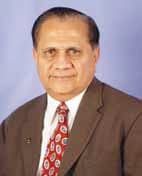 Chairman: Dr Ramdas M Pai
Chairman: Dr Ramdas M Pai